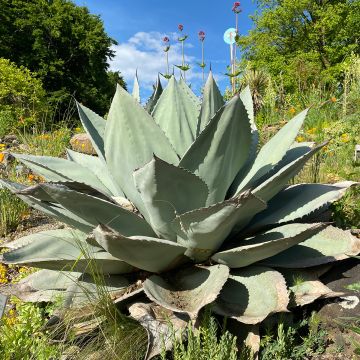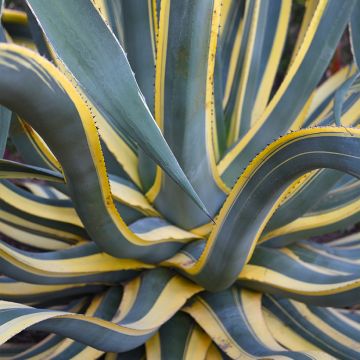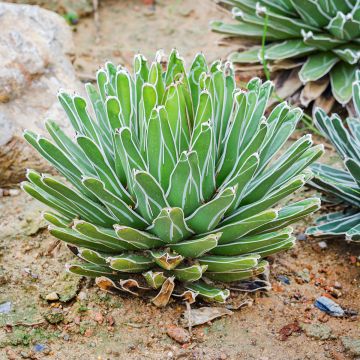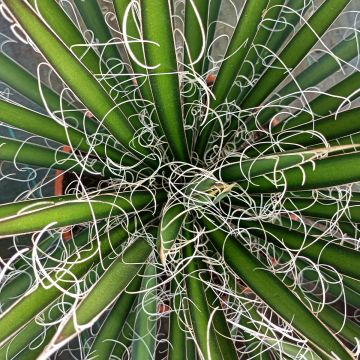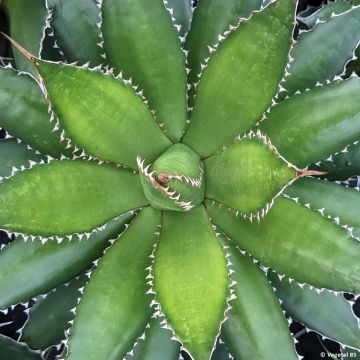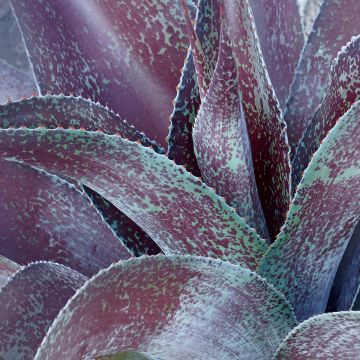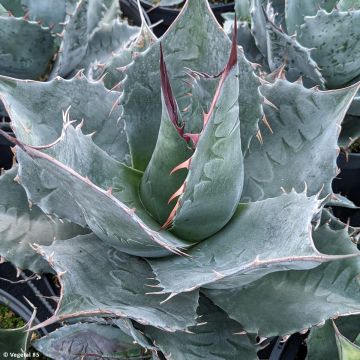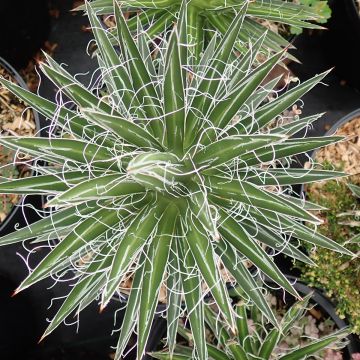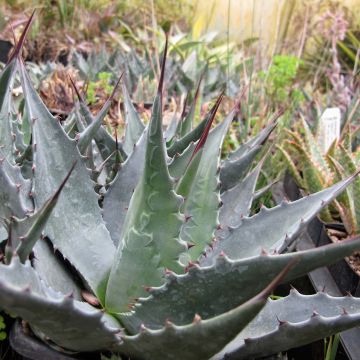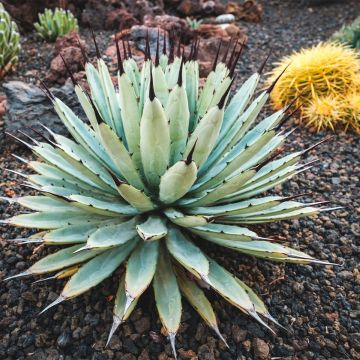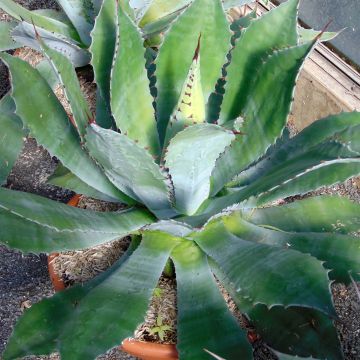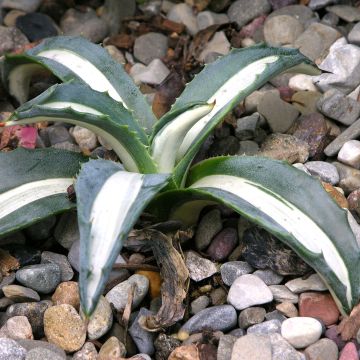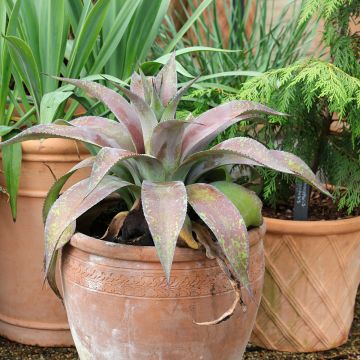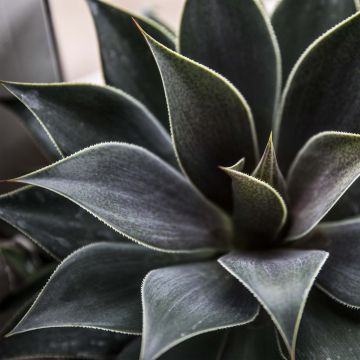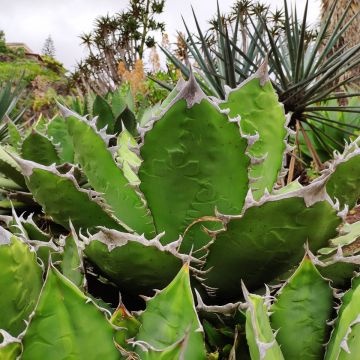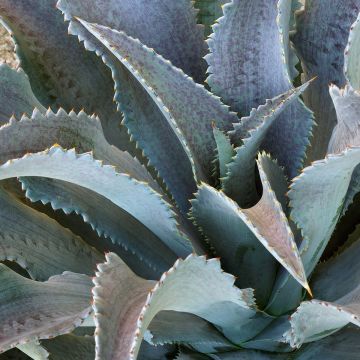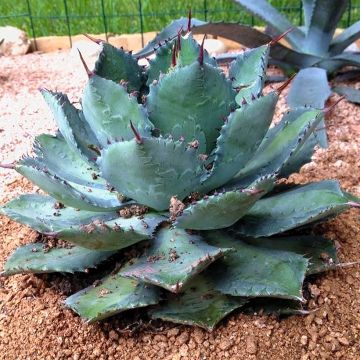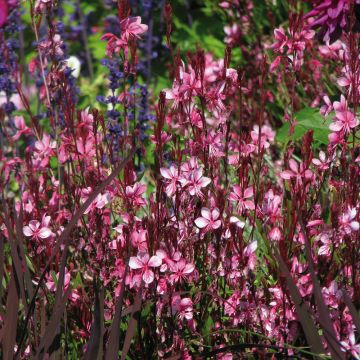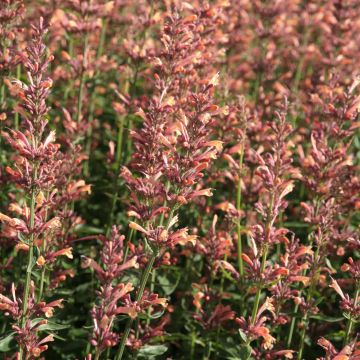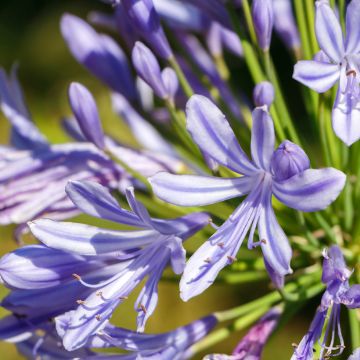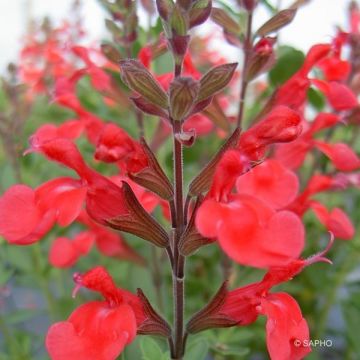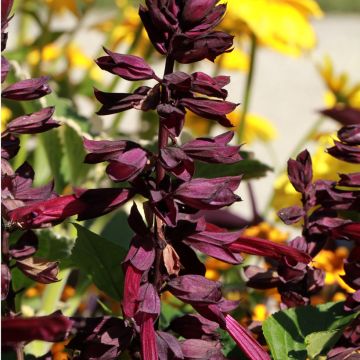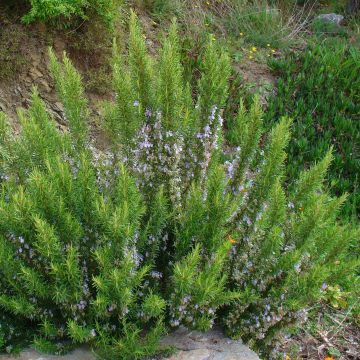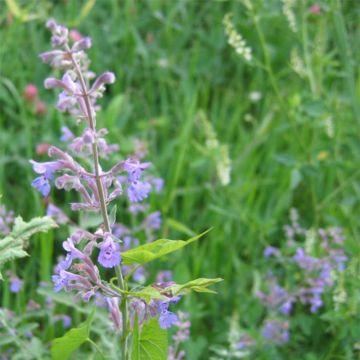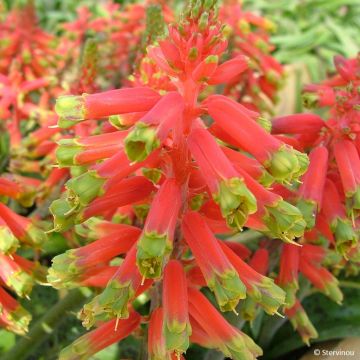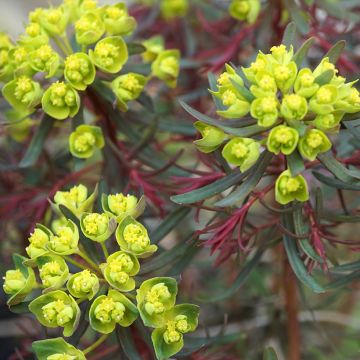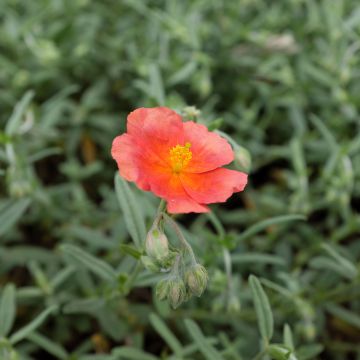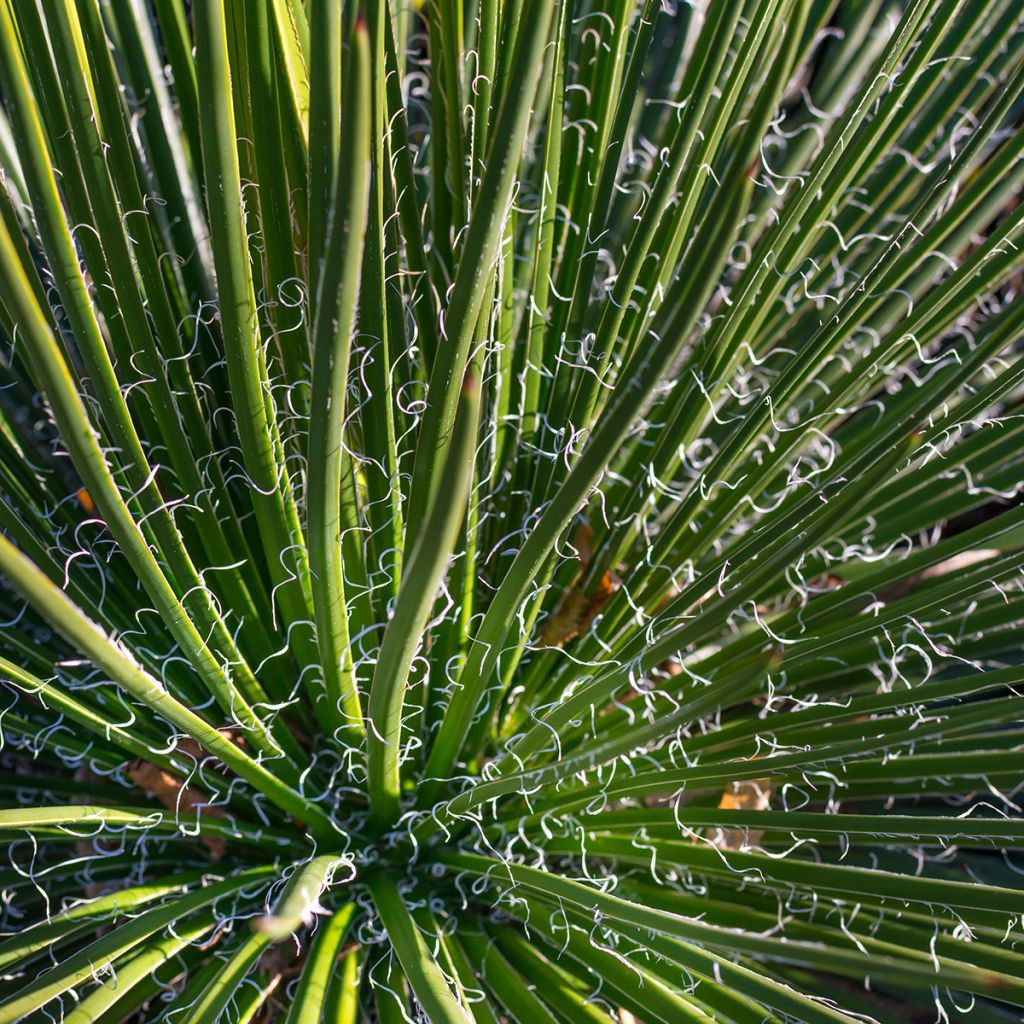

Agave geminiflora
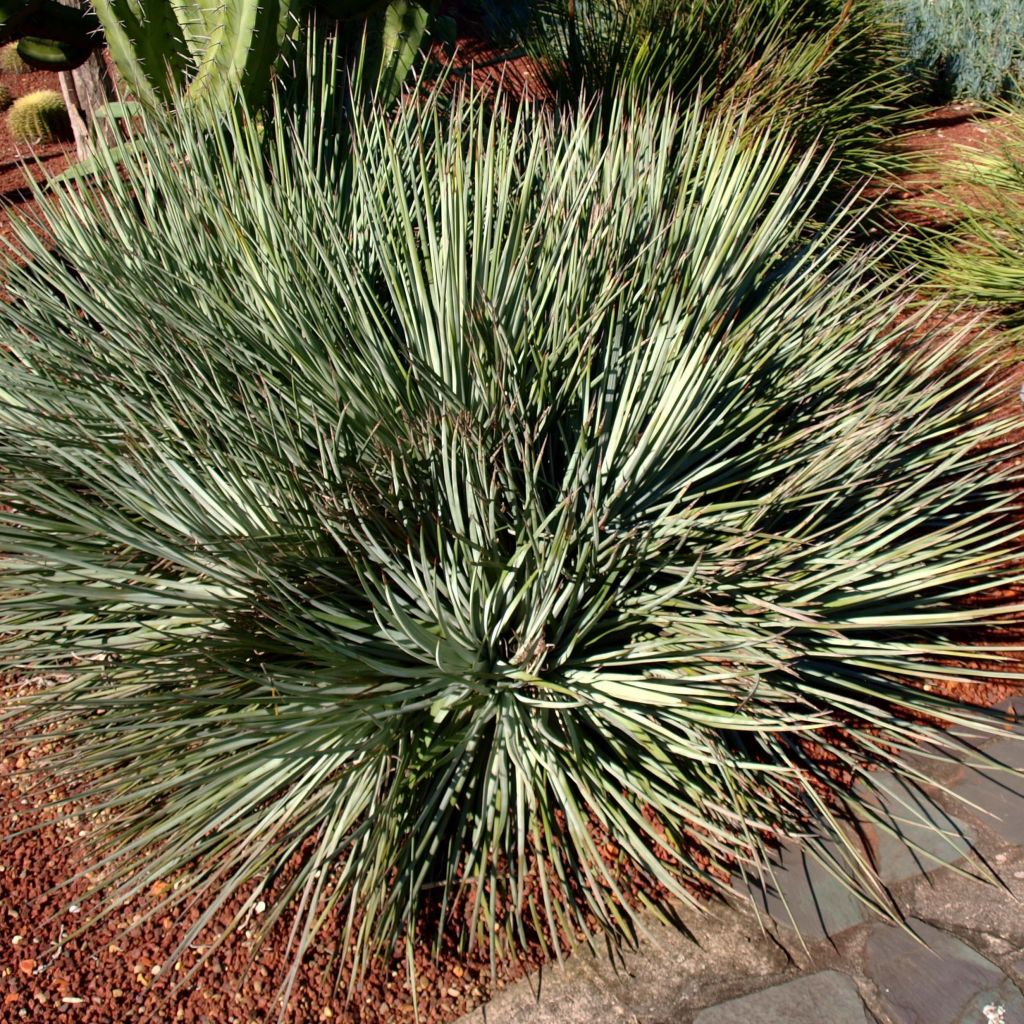

Agave geminiflora
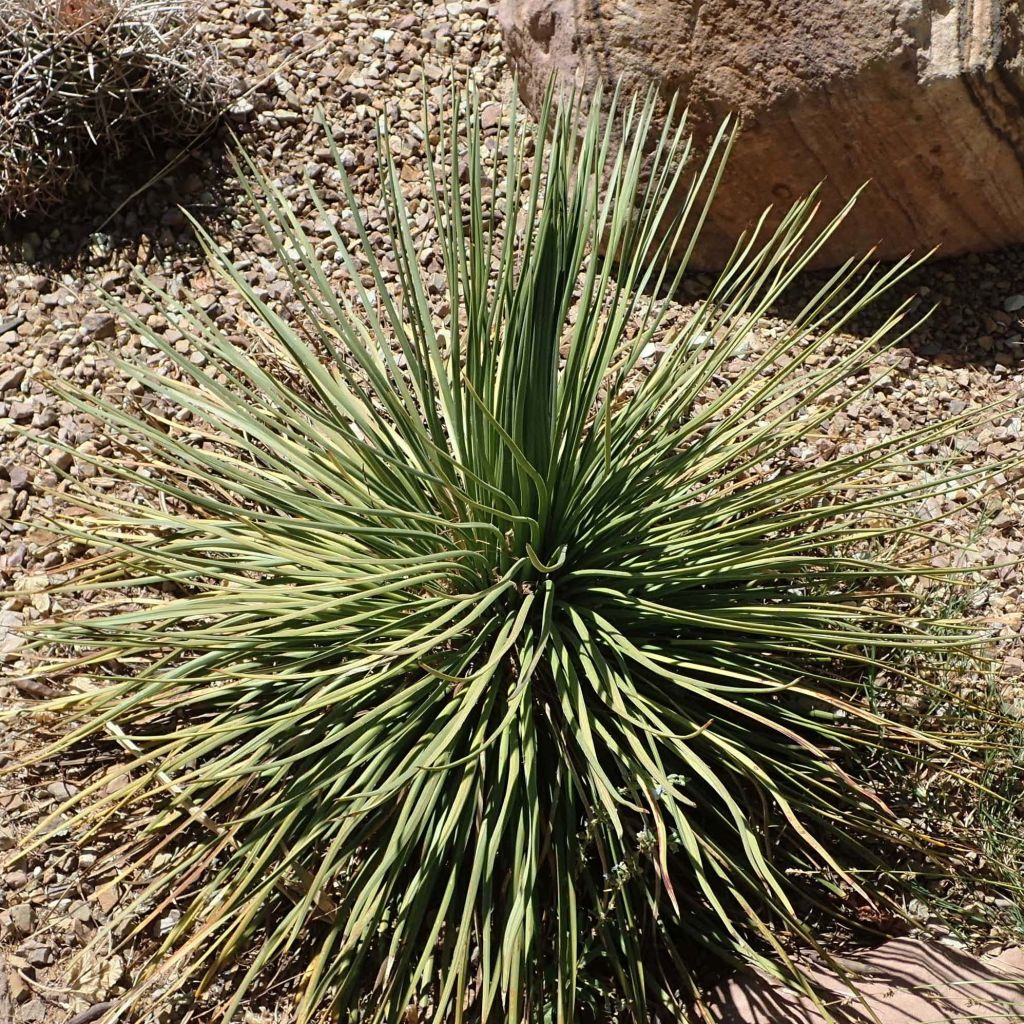

Agave geminiflora
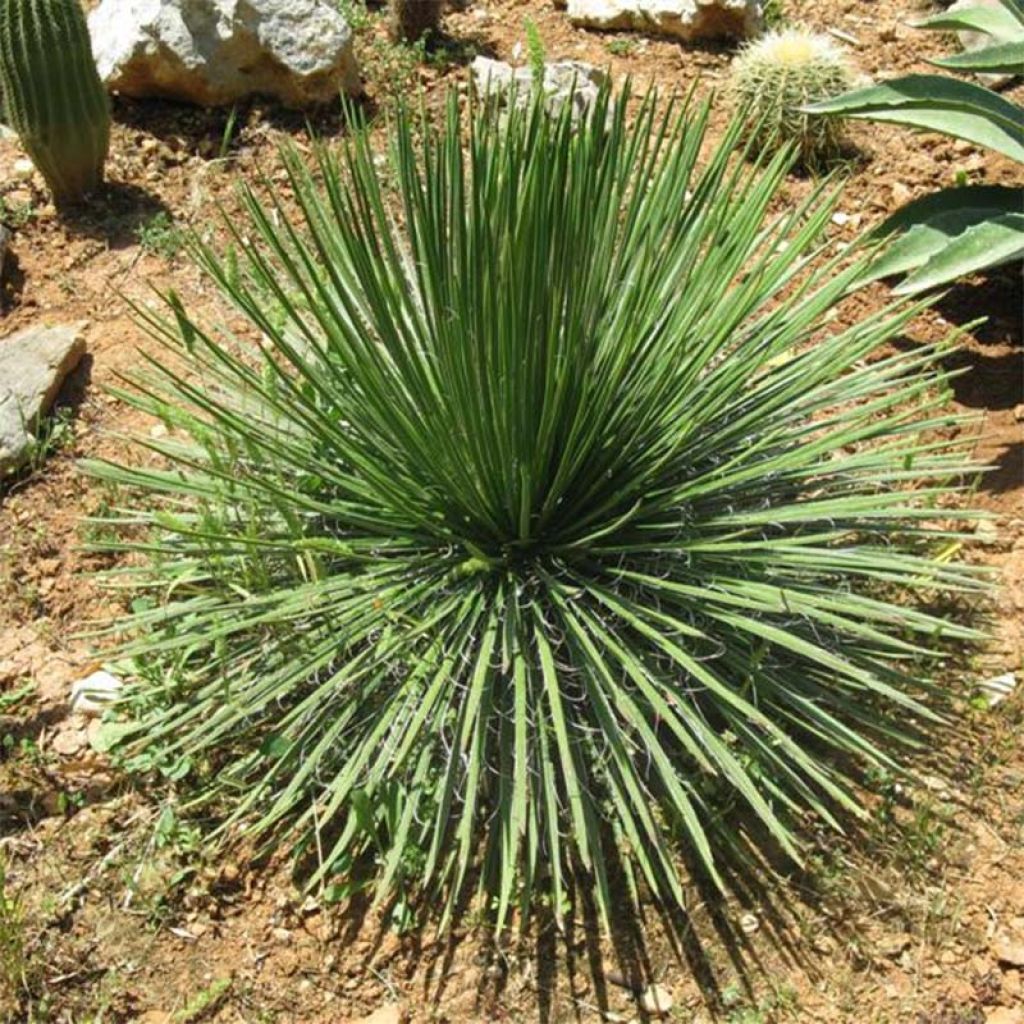

Agave geminiflora
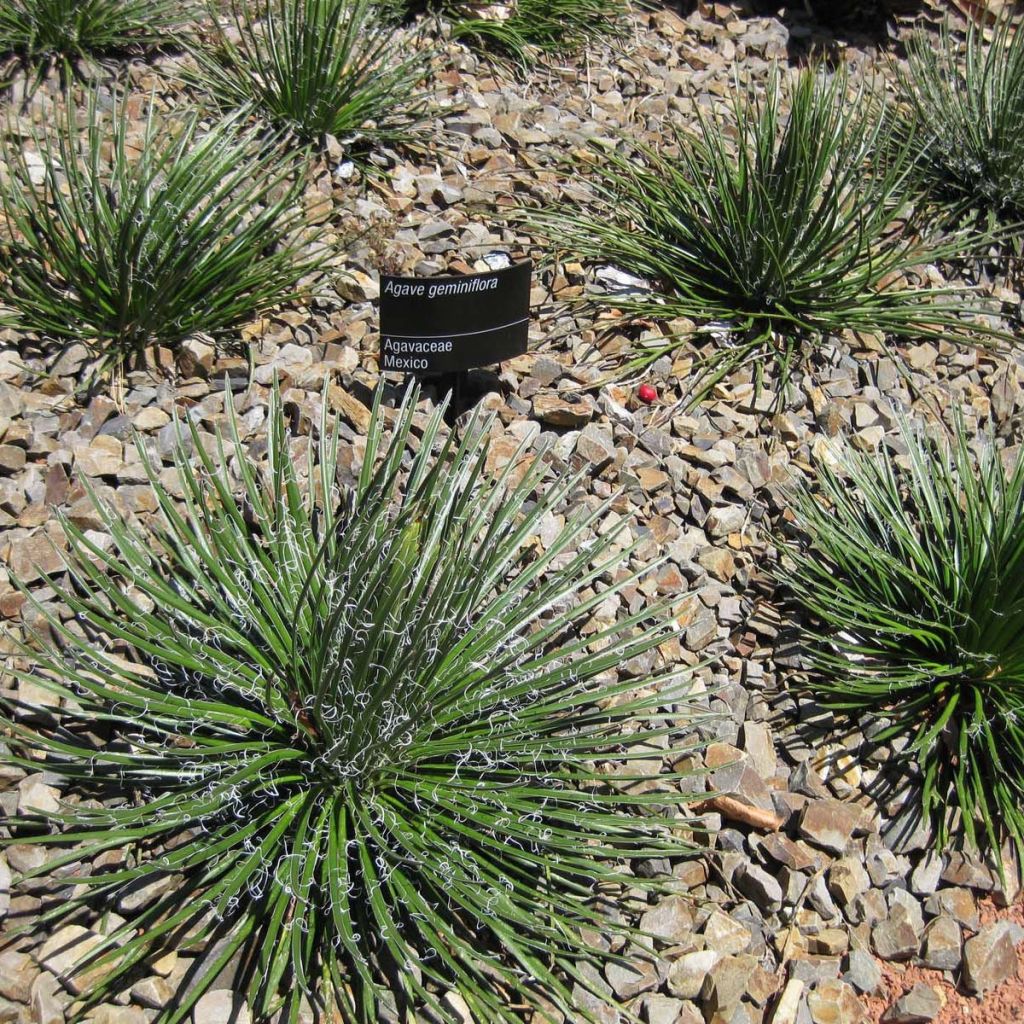

Agave geminiflora
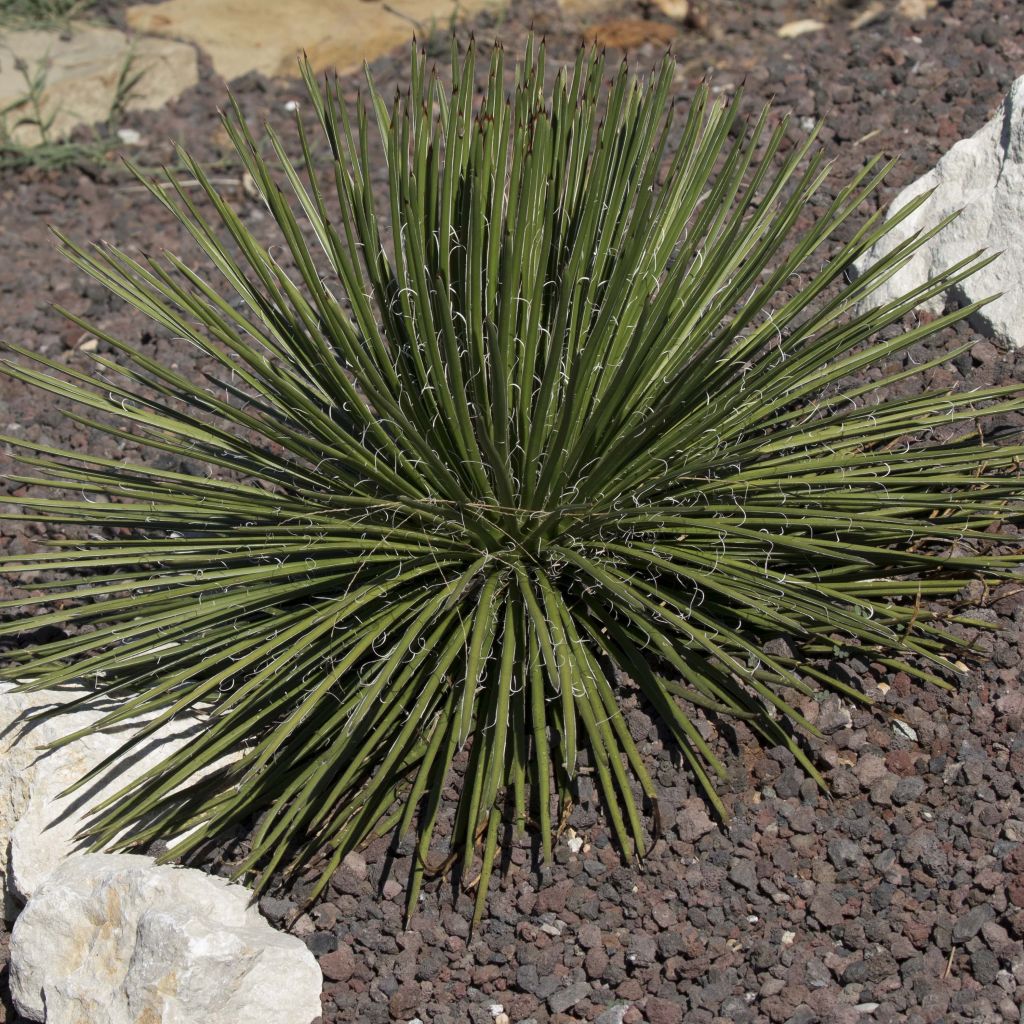

Agave geminiflora
Agave geminiflora
Agave geminiflora
Twin-flowered Agave
Why not try an alternative variety in stock?
View all →This plant carries a 12 months recovery warranty
More information
We guarantee the quality of our plants for a full growing cycle, and will replace at our expense any plant that fails to recover under normal climatic and planting conditions.
From €5.90 for pickup delivery and €6.90 for home delivery
Express home delivery from €8.90.
From €5.90 for pickup delivery and €6.90 for home delivery
Express home delivery from €8.90.
Does this plant fit my garden?
Set up your Plantfit profile →
Description
Agave geminiflora is a beautiful Mexican agave species with long, flexible, light green leaves, ending in a tip. Reaching a height of 1.2m (4ft), it forms a regular, hemispherical clump. Not hardy, it should only be planted in regions with mild and warm climates. Plant in the sun or in light shade, in rocky and well-drained soil, sheltered from cold winds. A well-established plant can withstand short frosts of around -8°C (17.6°F).
The twin-flowered agave is a rare and localised succulent species, native to a very small region in central Mexico, in the state of Nayarit. It belongs to the Asparagaceae family (formerly Agavaceae), just like yuccas or tuberose. In its natural habitat, it grows along rocky streams, in deciduous oak forests located between 1000 and 1400m (3281 and 4593ft) altitude. Curiously, although this species was among the first discovered in the genus in 1817, its traces were lost until its "rediscovery" in the 1950s. However, it remains very uncommon in cultivation. The twin-flowered agave is distinguished by a low habit, on a short trunk, eventually forming an almost perfect sphere over 1m (3ft) in diameter. The leaves are initially light green then darker, and are soft, narrow, and end in a point. Their thick lamina is slightly convex on the upper surface. Fine white filaments detach along their margin. These leaves can turn red if exposed to strong sunlight. Unlike other agaves, this species almost never produces suckers from the stump. After about 10 years, the rosette produces a gigantic yellow-green flower spike, reaching 3 to 4m (10 to 13ft) in height, sometimes more. The species name comes from the fact that the flowers are grouped in pairs on the inflorescence. The species is semelparous, meaning that the rosette dies once the (long) flowering is over, but not without producing some suckers at the base.
Agave geminiflora is subjected to relatively dry conditions in its natural habitat, which gives it excellent heat resistance, and a certain resistance to droughts even though it will be more beautiful in soil that does not completely dry out. However, it requires very well-drained soil, otherwise the thick and fleshy stump can easily rot. Given its Mexican origins, the plant remains quite sensitive to cold and will be damaged beyond -8°C (17.6°F), even -10°C (14°F). Therefore, choose a cool, dry, rocky location, sheltered from cold winds, in the sun or in light shade. In a region with humid winters, it would be wiser to overwinter it in a large pot. Maintenance is otherwise minimal.
For exotic scenes, it will have a beautiful effect in a large rockery, alongside other agaves like Agave montana, as well as with Beschorneria, agapanthus, or tall grasses like Stipa gigantea.
Report an error about the product description
Agave geminiflora in pictures
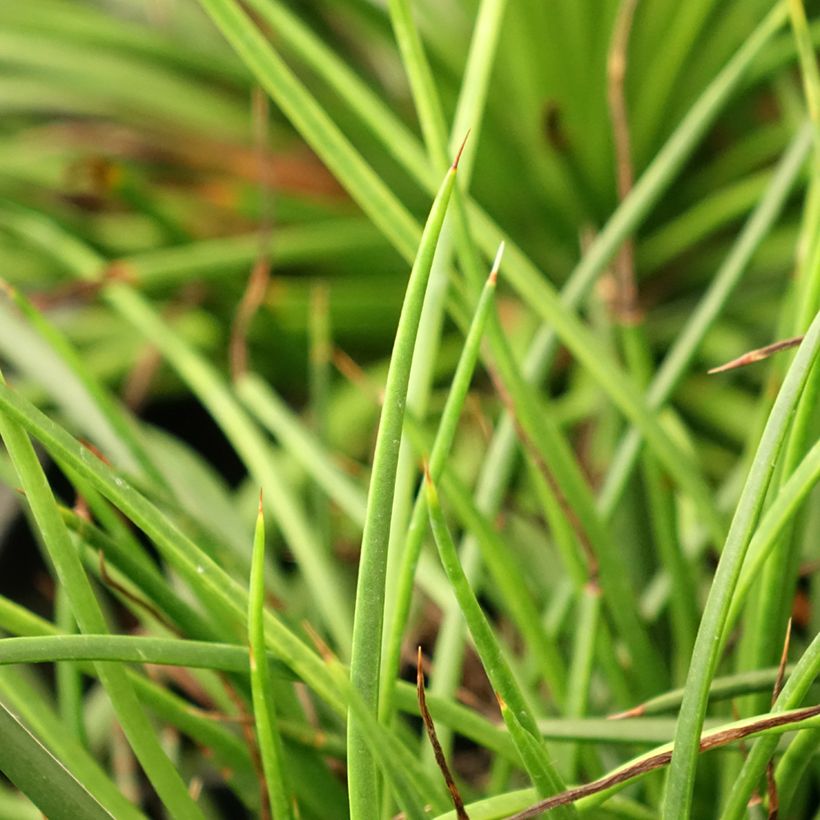

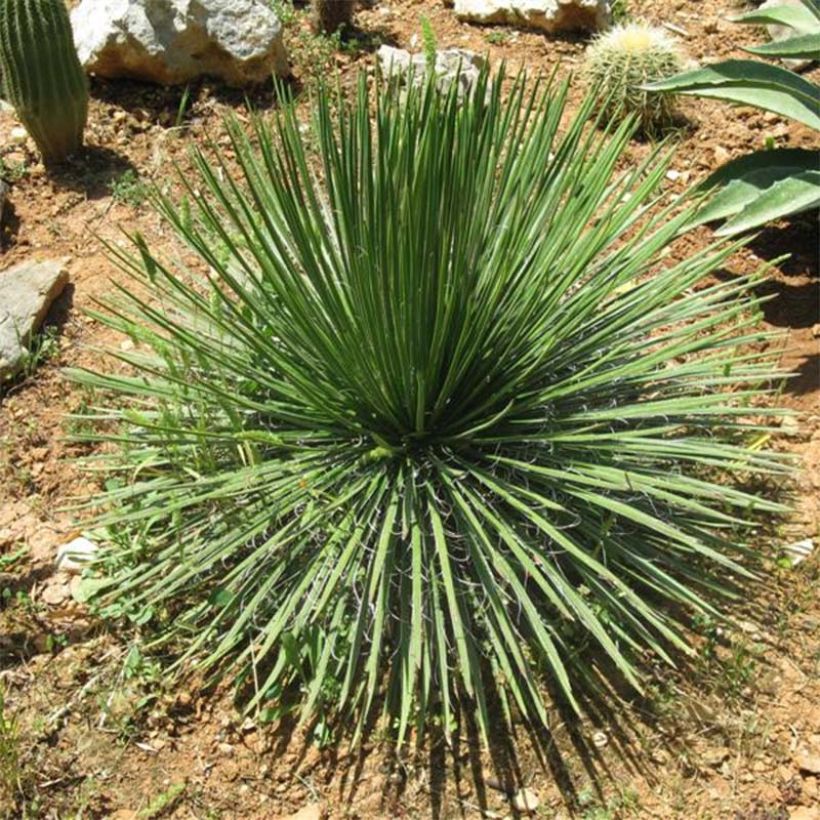

Flowering
Foliage
Plant habit
Botanical data
Agave
geminiflora
Agavaceae
Twin-flowered Agave
Central America
Other Agave
Planting and care
Position it in full sun or partial shade. Plant it in poor, rocky, limestone, or sandy, well-draining soil. It does not tolerate winter humidity and cold, but can withstand dry cold in dry soil. Protect it from humidity in regions with rainy and cold winters by using a temporary waterproof shelter that allows light to pass through, such as a transparent plastic tarp. If this installation is not aesthetically pleasing, it has the merit of saving the life of this rare plant. As it prefers dry soils in summer, you can consider planting it in a 50cm (20in) hole filled with a mixture of rocks and light soil. Ensure its collar is kept free from stagnant water. The drier the soil, the more resistant it will be to frost, up to about -6°C (21.2°F).
As the plant has rather modest growth, it can be cultivated in a pot (preferably terracotta) on a terrace or balcony, in a light substrate such as cactus soil, with particular attention to drainage. Regularly water in summer, but let the substrate dry between 2 waterings. It will then be easy to store the pot away from heavy frosts and humidity, in a bright, well-ventilated, minimally or not heated room. Reduce or even stop watering in winter. The plant can spend April to October outdoors.
Always wear protective gloves when handling this plant.
Planting period
Intended location
Care
-
, onOrder confirmed
Reply from on Promesse de fleurs
Mediterranean perennials
Haven't found what you were looking for?
Hardiness is the lowest winter temperature a plant can endure without suffering serious damage or even dying. However, hardiness is affected by location (a sheltered area, such as a patio), protection (winter cover) and soil type (hardiness is improved by well-drained soil).

Photo Sharing Terms & Conditions
In order to encourage gardeners to interact and share their experiences, Promesse de fleurs offers various media enabling content to be uploaded onto its Site - in particular via the ‘Photo sharing’ module.
The User agrees to refrain from:
- Posting any content that is illegal, prejudicial, insulting, racist, inciteful to hatred, revisionist, contrary to public decency, that infringes on privacy or on the privacy rights of third parties, in particular the publicity rights of persons and goods, intellectual property rights, or the right to privacy.
- Submitting content on behalf of a third party;
- Impersonate the identity of a third party and/or publish any personal information about a third party;
In general, the User undertakes to refrain from any unethical behaviour.
All Content (in particular text, comments, files, images, photos, videos, creative works, etc.), which may be subject to property or intellectual property rights, image or other private rights, shall remain the property of the User, subject to the limited rights granted by the terms of the licence granted by Promesse de fleurs as stated below. Users are at liberty to publish or not to publish such Content on the Site, notably via the ‘Photo Sharing’ facility, and accept that this Content shall be made public and freely accessible, notably on the Internet.
Users further acknowledge, undertake to have ,and guarantee that they hold all necessary rights and permissions to publish such material on the Site, in particular with regard to the legislation in force pertaining to any privacy, property, intellectual property, image, or contractual rights, or rights of any other nature. By publishing such Content on the Site, Users acknowledge accepting full liability as publishers of the Content within the meaning of the law, and grant Promesse de fleurs, free of charge, an inclusive, worldwide licence for the said Content for the entire duration of its publication, including all reproduction, representation, up/downloading, displaying, performing, transmission, and storage rights.
Users also grant permission for their name to be linked to the Content and accept that this link may not always be made available.
By engaging in posting material, Users consent to their Content becoming automatically accessible on the Internet, in particular on other sites and/or blogs and/or web pages of the Promesse de fleurs site, including in particular social pages and the Promesse de fleurs catalogue.
Users may secure the removal of entrusted content free of charge by issuing a simple request via our contact form.
The flowering period indicated on our website applies to countries and regions located in USDA zone 8 (France, the United Kingdom, Ireland, the Netherlands, etc.)
It will vary according to where you live:
- In zones 9 to 10 (Italy, Spain, Greece, etc.), flowering will occur about 2 to 4 weeks earlier.
- In zones 6 to 7 (Germany, Poland, Slovenia, and lower mountainous regions), flowering will be delayed by 2 to 3 weeks.
- In zone 5 (Central Europe, Scandinavia), blooming will be delayed by 3 to 5 weeks.
In temperate climates, pruning of spring-flowering shrubs (forsythia, spireas, etc.) should be done just after flowering.
Pruning of summer-flowering shrubs (Indian Lilac, Perovskia, etc.) can be done in winter or spring.
In cold regions as well as with frost-sensitive plants, avoid pruning too early when severe frosts may still occur.
The planting period indicated on our website applies to countries and regions located in USDA zone 8 (France, United Kingdom, Ireland, Netherlands).
It will vary according to where you live:
- In Mediterranean zones (Marseille, Madrid, Milan, etc.), autumn and winter are the best planting periods.
- In continental zones (Strasbourg, Munich, Vienna, etc.), delay planting by 2 to 3 weeks in spring and bring it forward by 2 to 4 weeks in autumn.
- In mountainous regions (the Alps, Pyrenees, Carpathians, etc.), it is best to plant in late spring (May-June) or late summer (August-September).
The harvesting period indicated on our website applies to countries and regions in USDA zone 8 (France, England, Ireland, the Netherlands).
In colder areas (Scandinavia, Poland, Austria...) fruit and vegetable harvests are likely to be delayed by 3-4 weeks.
In warmer areas (Italy, Spain, Greece, etc.), harvesting will probably take place earlier, depending on weather conditions.
The sowing periods indicated on our website apply to countries and regions within USDA Zone 8 (France, UK, Ireland, Netherlands).
In colder areas (Scandinavia, Poland, Austria...), delay any outdoor sowing by 3-4 weeks, or sow under glass.
In warmer climes (Italy, Spain, Greece, etc.), bring outdoor sowing forward by a few weeks.

































